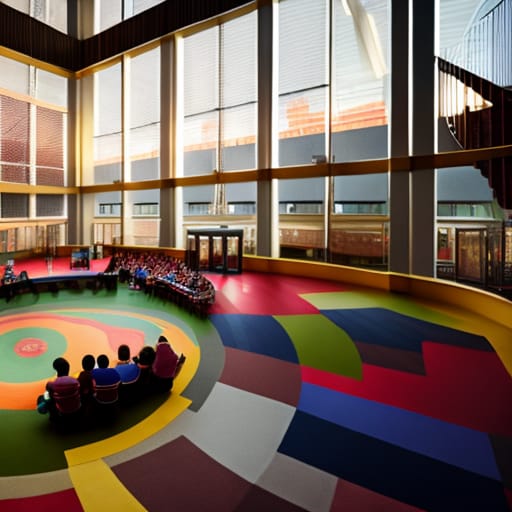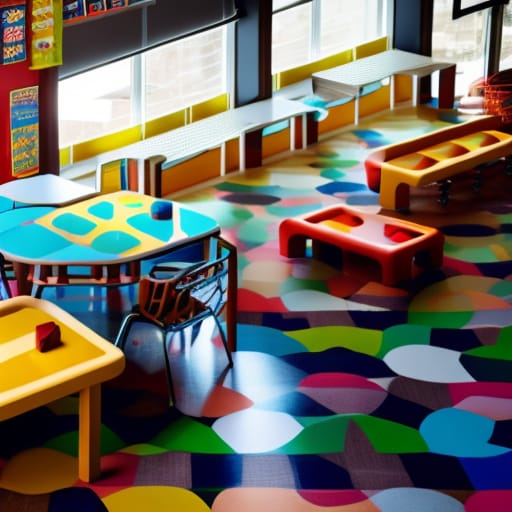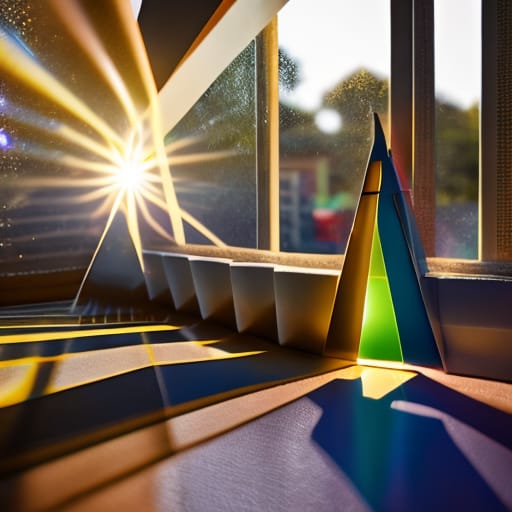Do your kids love to build? Are you looking for STEM toys that inspire creativity and critical thinking? Magna-Tiles may be the perfect educational toy for your little builder. These colorful plastic shapes have a secret ingredient – magnets! The magnetic edges allow for endless construction play as shapes attach together to build houses, rockets, rainbows, and anything kids can dream up.
In this beginner’s guide, we will explore everything Magna-Tiles has to offer for early learning and skill development. Discover why teachers and parents alike rave about these magnetic blocks. Learn tips for using Magna-Tiles to boost spatial skills, language development, and more. We’ll also showcase the incredible structures and designs children as young as 3 can create with their endless imagination.
Overview: Why Magna-Tiles Are the Ultimate STEM Toy
Magna-Tiles are a patented magnetic building set created in the mid-1990s as an open-ended construction toy to inspire creativity in young minds. These award winning blocks offer benefits well beyond regular wooden blocks or Lego bricks. Here’s why Magna-Tiles have remained a popular educational toy for over 20 years:
- Builds spatial intelligence, math skills, geometry knowledge from an early age
- Colorful translucent shapes spark imagination and creativity
- Magnets provide limitless building potential – no instructions required!
- STEM-approved toy that introduces engineering concepts through play
- Develops planning, problem-solving and other 21st century skills
- Great for collaborative and language-building playdates and classroom activities
As you’ll discover, Magna-Tiles offer an engaging hands-on learning experience centered around exploratory play.
A Magnetic Journey: The History of Magna-Tiles
The Magna-Tiles story starts in the early ‘90s when Japanese toy inventor Kuniaki Kawasaki visited an electronics trade show. His eyes locked onto a display of magnets arranged to demonstrate magnetic polarity – magnets standing upright in a wave pattern attracting at the top and repelling at the bottom.
In that moment, Kawasaki envisioned a building toy using magnets and clear plastic tiles in a skeleton-like structure. He perfected the design over 3 years before unveiling his patented magnetic construction set in 1993 to wild success in Japan.
The Magna-Tiles brand as we know it today formed in 1997 when U.S company Valtech acquired the worldwide license for the unique magnetic blocks. They recognized Magna-Tiles’ immense learning potential and developed the product specifically for the U.S educational toy market.
Thanks to grassroots popularity and acclaim within the teacher community, Magna-Tiles became a beloved classroom STEM material. Early marketing was all word-of-mouth as teachers shared the blocks’ ability to build math skills through hands-on learning. Plus, the open-ended play value gave Magna-Tiles an advantage over puzzles or kits following fixed patterns.
Over 20 years later, Magna-Tiles remain a top-selling construction toy, using the same patented magnetic technology to capture childlike imagination and introduce foundational math concepts.
Why Magna-Tiles Are Significant for Early Learning
Open-ended toys like Magna-Tiles have incredible benefits for developing minds that set them apart from flashcard drilling. Here are reasons this classic toy has stood the test of time as a learning essential:
Spatial Intelligence – As young minds place shapes and build structures, they strengthen spatial reasoning abilities. Visualizing in 3D and rotating shapes boosts skills for higher math down the road.
Creativity and Problem-Solving – With no instructions, kids are free to experiment and test theories on how to build bridges, enclosures, mosaics, and more. They learn out-of-the box thinking.
Language Development – Describing their structures and the building process gives kids practice using positional and descriptive language.
Collaboration – The magnified tiles enable exciting group projects that build social skills. Kids learn cooperation, communication, negotiating roles, and presenting ideas.
Introduces STEM Concepts – Concepts like geometry, symmetry, balance, magnetic attraction/repulsion, and structural engineering come alive through interactive play long before lectures.
While screens overstimulate young minds, Magna-Tiles exercise cognitive control as kids plan, visualize, and problem-solve during the creative process. Educators particularly value Magna-Tiles’ ability to develop 21st century skills needed for careers in engineering and technology later on. But importantly, playing with Magna-Tiles doesn’t feel like academics. Kids think they are simply having fun!
Adding Magna-Tiles to a child’s toy repertoire provides immense benefits all while letting imagination run free. Let’s look at some of the key educational skills Magna-Tiles boost in young minds.

Key Educational Benefits of Magna-Tiles
Enhances Spatial and Math Skills
As a magnetic geometry set, Magna-Tiles inherently build spatial reasoning and shape recognition as the colorful pieces attach. Spatial intelligence during the preschool years is strongly correlated with excelling in higher math and science later on. Playing with the translucent 3D shapes strengthens mental rotation and visualization abilities that underpin success with geometry, measurement, charts/graphs and more.
In a 2017 study by the University of California, preschool students exposed to Magna-Tiles for a semester significantly improved spatial skills like shape composition, design copying, and block building compared to peers. Their daily free play using Magna-Tiles exercised mental imaging to translate 2D plans into 3D structures.
Promotes Logic and Problem-Solving
Magna-Tiles deliver an exciting introduction to structural engineering concepts through trial and error exploratory play. Armed with their set of shapes, kids must experiment to build enclosures, bridges, mazes, towers, and more. This tests their planning skills, resilience, and how to recover the tiles when structures tumble. Teachers love having Magna-Tiles to teach physics concepts like gravity, friction, magnetic polarity, and geometry in a hands-on way.
With endless combinations possible, each new creation is a unique logic challenge. You’ll be amazed watching kids test out magnetism, balance, and weight distribution principles firsthand through their structures. Problem-solving and critical thinking see a surge of growth.
Enhances Shape and Color Recognition
The colorful transparent tiles introduce children to a variety of 2D shapes like squares, triangles, hexagons and trapezoids. Seeing the shapes attach in different configurations builds neural connections to recognize attributes like sides, corners, and angles. Studies show structured block play in the preschool years develops sharper mental imaging of shapes that evolves into geometry and measurement competence.
Plus, the bright tile colors help color recognition as kids learn to describe, match, and sort the pieces into color groups. Educators often use Magna-Tiles to teach positional concepts like beside, under, around. The see-through tiles let you incorporate printed image mats visible beneath their structures to build language.
Develops Fine Motor Skills
The process of snapping together and pulling apart the magnified tiles builds fine finger control and dexterity. Occupational therapists often recommend Magna-Tiles to strengthen the small muscles in children’s hands essential for tasks like writing, buttoning, and cutting. As they construct patterns and mosaics by shaping tiles together, hand-eye coordination sees a great workout too. Clasping and rotating the chunky pieces requires concentration and precision perfect for developing motor skills.
Now that you know the incredible developmental benefits of regular Magna-Tiles play, let’s spotlight exactly why the product itself outshines regular building blocks.
Key Product Features and Benefits of Magna-Tiles
Magna-Tiles sparked a revolution in magnetic toy design with its patented clear plastic and magnet configuration unseen before 1993. But why does this toy fly off shelves year after year winning toy awards worldwide? Let’s explore what sets Magna-Tiles apart as an early learning essential:
Translucent and Colorful Shape Design
The transparent plastic shape tiles first capture kids’ attention with their bright colors visible through the see-through material. The thick, crystal clear pieces measuring about 2 inches feel sturdy and durable in small hands. Kids can see the embedded magnets lining the edges that enable the almost magic-like connections.
The plastic lattice structure gives the shapes dimension like 3D skeletons. The pieces join together through this open framework in every direction, a breakthrough from flat magnetic boards. Kids can look through completed structures to understand shape attributes or incorporate pattern cards and story images.
Plus, the sets include a vibrant array of primary colors like red, blue, green and yellow that boost color recognition. Specialty shape sets also add translucent white/clear pieces for building rainbows, towers and sculptures with light play.
Ingenious Magnetic Connectivity
The ingenious magnetic polarity in Magna-Tiles sets them apart from any other building set. In each brightly colored transparent plastic shape, magnets are embedded in opposite pole directions. This allows the tiles to firmly click together from any angle while still being easy for kids to separate.
So instead of stacking like blocks or relying on friction like Lego, Magna-Tiles open limitless building potential. Kids can build up, out and sideways in every direction thanks to the genius magnet orientation. Structures lock tightly into place with an audible snap as shapes attract. Many parents describe Magna-Tile creations as “defying gravity” remaining intact no matter how complex kids construct.
Rigorously Tested for Safety and Durability
As a toy synonymous with quality and longevity, Magna-Tiles undergo rigorous safety testing through independent labs. All tile pieces and magnets pass strict standards for choking hazards and hazardous materials. So you can rest assured the non-toxic phthalate-free plastic and magnet composition meet regulations for safe play.
Dropped tiles don’t chip or crack thanks to the durable thermoplastic material. And the sturdy embedded magnets maintain their strength over years of use without losing their snapping power. Magna-Tiles lock tightly through all stages of building so you won’t find shapes scattering apart like flimsy fridge magnets. Customers praise how Magna-Tiles withstand heavy use from kids and consistent cleaning while keeping their vibrancy. Most quality sets easily last through multiple kids with some sets lasting 10+ years!
Mixes and Matches For Maximum Creativity
With multi-shape sets and accessories now available, kids can interlock different Magna-Tiles sets for even bigger creations. The patented magnet formula enables seamless connections between imported and locally made Magna-Tiles sets. Premium brands like Magna-Tiles (Valtech) and Magformers were previously incompatible but now magnetize together thanks to updated polarity.
So feel free to add select shape packs or transparent colors to juice up building potential. Kids can incorporate houses, Ferris wheels, elongated triangles, and more into their cities. See the accessory section for recommended expansion packs that safely work across Magna-Tile brands.

Best Magna-Tile Building Ideas and Classroom Uses
The education community deserves much credit for catapulting Magna-Tiles to fame as teachers first spotted their amazing play-based learning potential back in the late 1990s. Today, you’ll find Magna-Tiles in most preschool and elementary classrooms as they align perfectly with key early childhood education philosophies centered around exploratory play.
Young students thrive when they actively participate in the learning process rather than passively absorb information. Let’s discover some of the best ways educators have used Magna-Tiles to teach core concepts across the curriculum:
Engaging Math Education
Math jumps to life when kids can physically manipulate objects to understand concepts instead of just memorizing facts. Magna-Tiles make math explorations fun as students tessellate shapes, count sides and corners, learn fractions mixing shapes, and calculate perimeter and area. Teachers often use grid mats so students can conceptualize measurement principles when planning Magna-Tile structures in 2D before building in 3D.
Grade school educators inject more math by having students calculate volume, symmetry, and scale to build replicas applying ratios. They discover STEM careers seeing blueprints and modeling real-world infrastructure like bridges, skyscrapers, transit systems scaled to Magna-Tile size.
Assigning students to engineer earthquake-proof tower designs that can withstand a shake test engages critical thinking about sturdy shapes and distribution of weight. Mixing math storytelling with dramatic Magna-Tile creations brings lessons to life too.
Exploring Science Phenomena Hands-On
Beyond foundational STEM concepts like magnetism and polarity, teachers use Magna-Tiles to model science phenomena so students gain first-hand experience. Bridges and archways demonstrate gravity, load distribution, tension, and compression principles that are core engineering concepts. Building enclosing structures lets kids test insulation properties when challenged to create a Magna-Tile greenhouse that traps heat.
Kindergarten and first grade educators craft adventurous lessons for young scientists like using black construction paper beneath translucent structures to observe light diffraction effects. Or mixing DIY activities like lining Magna-Tile pieces with copper tape to create circuits that illuminate with LED lights. This boosts design thinking and tinkering skills key for innovation. Magna-Tiles become a science sandbox to test how changing variables impacts outcomes just like real scientists and engineers.
Building 21st Century Skills
The unlimited creative potential in Magna-Tiles provides the ideal vehicle for developing vital future-ready skills identified by the World Economic Forum like:
- Critical thinking
- Complex problem solving
- Coordinating with others
- Creativity
- People management
Assigning collaborative Magna-Tile challenges nurtures communication, leadership dynamics, delegation, and conflict resolution as students navigate roles to construct unified projects. Teachers often form build challenges for pairs or small student teams to encourage cooperation towards a common goal.
Presenting fun Storystarter scenarios, mysteries, or adventure themes unlocks the imagination to build scenes and props that support telling an original tale. Students exercise storytelling finesse conveying the plot through the symbolic structures. Or they step into different character perspectives unpacking emotions and intentions to enrich the experience. Collaborative storytelling with Magna-Tiles becomes an outlet to creatively process classroom conflicts and real world issues too.
Open-ended challenges invite endless forms of creative expression and higher level thinking as young minds experiment combining shapes and testing theories. By keeping projects student-directed, teachers nurture self-confidence and agency in learning.
Magna-Tiles adaptable nature makes them the ultimate cross-curricular material blending math, science, communication, storytelling and unrestrained creativity.
Builds Speech and Language Abilities
Beyond academic concepts, Magna-Tiles build vital language skills during the critical early communication window. Following multi-step directions to construct shapes challenges listening comprehension and spatial sequencing.
As young builders describe their process or tell stories inspired by scenes, they build descriptive vocabulary and complex sentence structures. Fun practice includes having classmates follow verbal building directions to replicate mini-models. The visual tracing strengthens mind-mouth coordination conveying spatial concepts.
Collaborative play inherently builds conversational discourse and social communication skills. Enrichment ideas include capturing Magna-Tile art or structures through photos to create vocabulary-building storybooks.
Parent and Teacher Perspectives on Magna-Tiles Benefits
Beyond the developmental benefits research demonstrates, glowing Magna-Tiles reviews from teachers and parents offer real-world anecdotal evidence on why Magna-Tiles inspire and engage children unlike any other toy.
Endless Creativity and Inventiveness
Parents can’t get over watching their children devote endless hours of independent play to Magna-Tile construction. Kids aged 2 to 12 invent unique masterpieces, showcase resourcefulness fixing “mistakes” and demonstrate persistence sticking with multi-step projects. The ability for pieces to connect at all angles in any direction empowers even very young kids to build elaborate structures faster than with traditional blocks. Yet the process still builds incremental hands-on learning.
Lisa C., mom of daughters aged 5 and 7, describes her girls’ Magna-Tile obsession:
“My daughters will spend hours building rainbow bridges, enclosures for their figurines, mazes for marbles. Their creativity has no bounds and they solve complex structural problems. Last week, my 5-year old engineered a castle with moving drawbridge all on her own.”
Another mom praises how open-ended Magna-Tile play cultivates her son’s ingenuity versus toys with defined uses:
“My son builds entire zoos, parking garages, and dinosaur habitats customizing the Magna-Tiles into whatever his latest interest is. Much better than kits only allowing you to replicate some picture.”
Frequently Asked Questions about Magna-Tiles
What ages are Magna-Tiles appropriate for?
Magna-Tiles are designed for children ages 3 and up. With their durable plastic construction and embedded magnets, the pieces are safe for preschoolers to handle. Magna-Tiles build spatial skills crucial for early math and science readiness making them ideal for early learning. Many parents report their kids playing with Magna-Tiles well into the grade school years too taking on group challenges.
Are the magnets safe and non-toxic?
Yes, Magna-Tiles adhere to strict international toy safety standards. All Magna-Tile sets undergo tests by independent labs to ensure the magnet composition and plastic tile material meet regulations for safe play. They are completely non-toxic BPA-free and lead-free.
How many pieces should my child start with?
We recommend a starter set of at least 32-tiles up to 100+ pieces for endless open-ended constructions at an engaging level for preschool kids. Consider allowing space for potential expansion packs like specialty shapes or clear colors for enhanced light play.
What’s better Magna-Tiles or Magformers?
Both Magna-Tiles and Magformers offer excellent magnetic building sets that promote creativity and spatial skills. While earlier versions had slight magnet differences, current polarity enables connectivity between both brands’ sets for even more creative combinations. Premium Magna-Tiles sets made by Valtech or new Magformers sets both make exceptional choices.
How can I incorporate Magna-Tiles in educational activities?
Beyond free building, Magna-Tiles enable fun learning explorations like patterning shapes for early math, tracing 2D blueprints to construct 3D structures, making playdough impressions with the tiles, or using translucent tiles as a light table for art. Hide alphabet letter or sight words cards underneath clear creations for kids to identify from peers’ descriptions.
Are Magna-Tiles compatible with other magnetic toys?
Quality sets with properly aligned internal magnets can interconnect with select similar magnetic building brands also made of plastic like Picasso Tiles or Kid Magnet Building Blocks. Avoid no-name knock off brands that often have weaker magnets or lose polarity. We don’t recommend connecting Magna-Tiles with magnetic sketch boards, fridge magnet letters/shapes or other flat magnetic toys lacking a compatible lattice grid.
How do I care and clean Magna-Tile pieces?
Magna-Tiles require minimal maintenance thanks to their durable thermoplastic and properly coated magnet composition. Check tiles periodically for magnet strength. Use a mild soap and water solution on a soft cloth to wipe down exterior grime. Avoid submerging tiles in liquid. Let tiles fully air dry before storing to prevent moisture damage. Sort pieces when putting away to prevent scratches.
